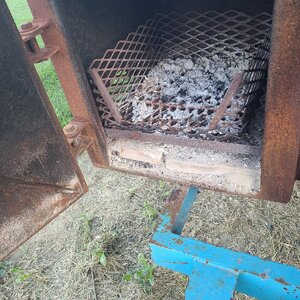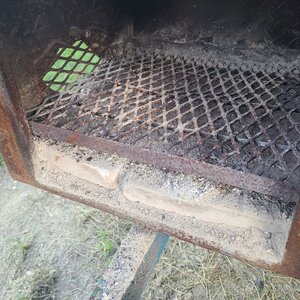I have an Old Country Brazos 1/4 steel entry-level offset. It's my first stick burner, and I'm loving it, but if I can maximize its effectiveness within a reasonable amount, I want to. I was watching a video, and the guy in the video was saying that the ideal volume of a firebox is about 1/3 of the cook chamber. (I'm not a builder, and don't understand all the science behind these things) The 1/3 volume thing sent me down a bit of a rabbit hole. I ended up learning that the Brazos firebox is about 1/2 of the cook chamber. So, I went to chat GPT to find the optimal solution.
Two questions. Is 1/3 truly optimal? And secondly, does this solution sound like a good solution
According to AI, the optimal set-up using 4.5" x 9" x 1.5" firebrick would take 28 bricks. It suggested the following:
Floor 12 - 3 rows × 4 bricks; covers floor area
Rear Wall 8 - 2 rows × 4 bricks; vertical placement
Side Wall 8 - 2 rows × 4 bricks; opposite air intake
Why this layout?
Two questions. Is 1/3 truly optimal? And secondly, does this solution sound like a good solution
According to AI, the optimal set-up using 4.5" x 9" x 1.5" firebrick would take 28 bricks. It suggested the following:
Floor 12 - 3 rows × 4 bricks; covers floor area
Rear Wall 8 - 2 rows × 4 bricks; vertical placement
Side Wall 8 - 2 rows × 4 bricks; opposite air intake
Why this layout?
- Floor: Raises coal bed, retains heat, and provides a stable fire base.
- Rear wall: Radiant heat reflection protects steel and distributes heat evenly.
- Side wall: Insulates and helps reflect heat, maintains even temperature.








